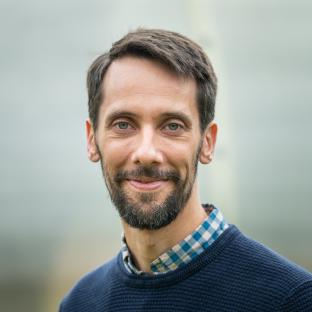Biography
Ross Maddox earned his Ph.D. and M.S. in Biomedical Engineering from Boston University, and his B.S. in Sound Engineering from the University of Michigan. Following his Ph.D., he completed a postdoctoral appointment at the University of Washington Institute for Learning & Brain Sciences (I-LABS). Prior to joining the Kresge Hearing Research Institute at the University of Michigan as an associate professor, he was on the faculty of the Departments of Biomedical Engineering and Neuroscience at the University of Rochester.
Areas of Interest
The human brain can focus on one sound source while tuning out the cacophony of daily life, effortlessly solving the so-called “cocktail party problem.” Solving this problem is remarkably complex: it involves precise neural coding of extremely fine acoustic information, integration of cues from the visual system, and two-way flow of information between a number of cortical and subcortical brain areas. The Maddox lab uses electroencephalography (measuring electric potentials on the scalp corresponding to brain activity) and psychophysics (measuring behavior) together in human subjects to investigate the processes that underpin selective attention and listening in general. Our research comprises an interplay of basic science, clinical/translational work, and development of new methods. With this approach, we hope to answer fundamental questions about how humans make sense of their noisy auditory world and how to improve diagnostic and assistive technologies.
The Maddox Lab currently has two primary foci. The first is on creating tools for improved diagnosis of hearing loss in infants. To this end we have developed the parallel auditory brainstem response (pABR). The pABR allows brain responses to sounds in both ears and at numerous frequencies to be measured all at once. This greatly speeds the estimation of hearing thresholds over traditional methods, which present stimuli one at a time. The second focus is on studying the human subcortical response to natural sounds. Most prior experiments have relied on repetitions of short, artificial stimuli (e.g., clicks or syllables), making it difficult to study brain responses while performing natural behaviors such as listening to one person speak while ignoring the voices of others. Our methods make studying such phenomena possible.


